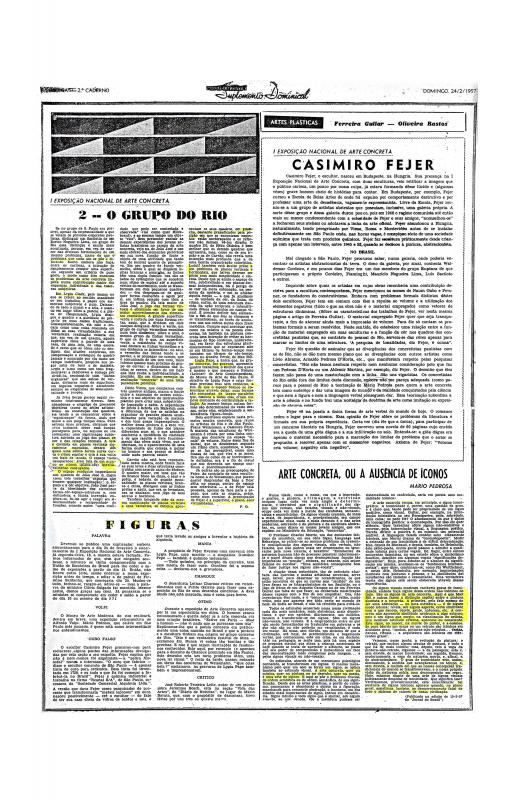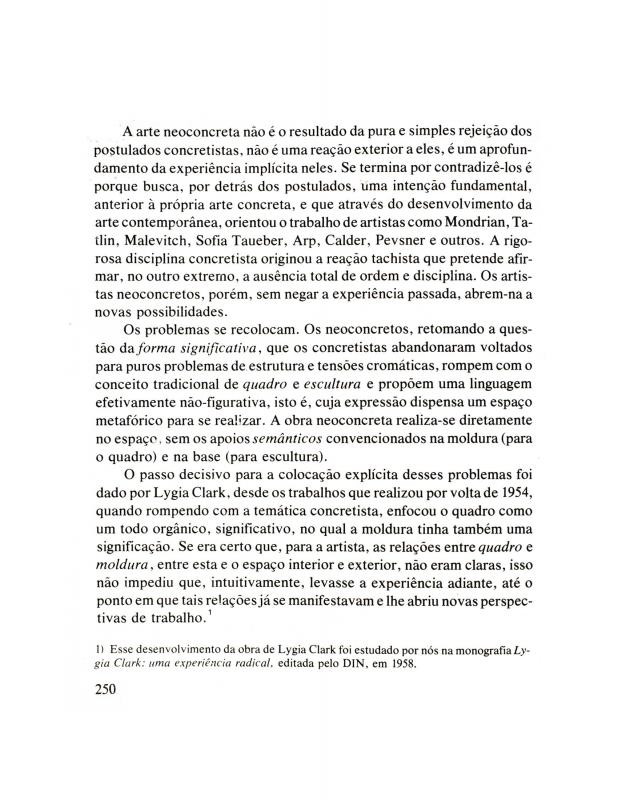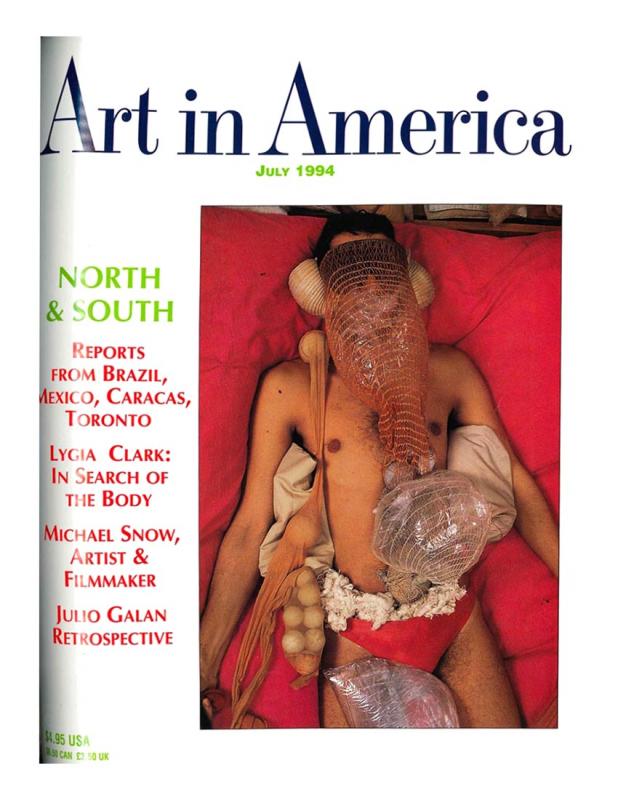In this text, Lygia Clark formulates a re-humanization of art on the basis of proposals activated by the body. The artist’s “pontifical” idea relegates the authorship of her work, a formulation that, at the end of her career, would lead to more radical experiments where the object was envisioned only as a “relational” element secondary to sensations. Crucial to the markedly experimental work she produced starting in the sixties was the “rediscovery of the individual by means of participatory experiences which, in the seventies, would take on a ‘therapeutic’ function.”
Brazilian artist Lygia Clark (1920–88) was active from the late forties through the eighties. In the fifties, after briefly producing figurative work on canvas, she joined a group of Rio de Janeiro-based artists initially known as Grupo Frente. Under the leadership of Ivan Serpa, that group looked to São Paulo as it became part of the Brazilian Concrete movement. Art critic Ferreira Gullar’s text “I Exposição Nacional de Arte Concreta: 2 ? O grupo do Rio” [doc. no. 1090217] describes and comments on work by Clark and others in the exhibition held in 1956. In the late fifties, Clark became part of the Neo-Concrete movement, which radically questioned the Concrete movement. That later movement began in 1959 with the launching of the “Manifesto Neoconcreto” written by Ferreira Gullar with artists Franz Weissmann, Amílcar de Castro, Lygia Pape, Reynaldo Jardim (who worked in theater), and Theon Spanudis (a poet), all of whom participated in the aforementioned I Exposição de Arte Neoconcreta (1959) in Rio.
Ferreira Gullar also considers the course of Clark’s work in the text, written in 1960, entitled “Do quadro ao não objeto” [doc. no. 1091272]. For a critical analysis of Clark’s international career through the eighties, see “Lygia Clark: In Search of the Body” [doc. no. 1232526], written in 1994 by English curator and critic Guy Brett, who took an active interest in her production from the beginning.



